Yvonne Stinson and I are the lead volunteers at the 8000 sq. ft. Thomasville Pollinator Garden at Cherokee Lake, and we also volunteer at Birdsong's Butterfly Garden. I'd like to tell you about the most successful plants available at this spring's Birdsong sales that we have found are not difficult to grow and attract the most pollinators.
LARVAL HOST PLANTS ESSENTIAL FOR POLLINATOR REPRODUCTION
Most native trees are important larval host plants, led by oaks, wild cherries, and willows. We will be selling live oak trees, an investment in the future! They can live up to 500 years. Thomasville's the Big Oak is a live oak, reportedly over 300 years old.
We all know the beauty they add to our southern cities and countrysides. All oaks together support over 500 species of butterflies and moths. Baby songbirds cannot eat the seed and berries their parents can, and they depend on the caterpillars of these lepidoptera. No caterpillars, no baby birds!
Planting and protecting these trees is an important way to support the natural web of life.
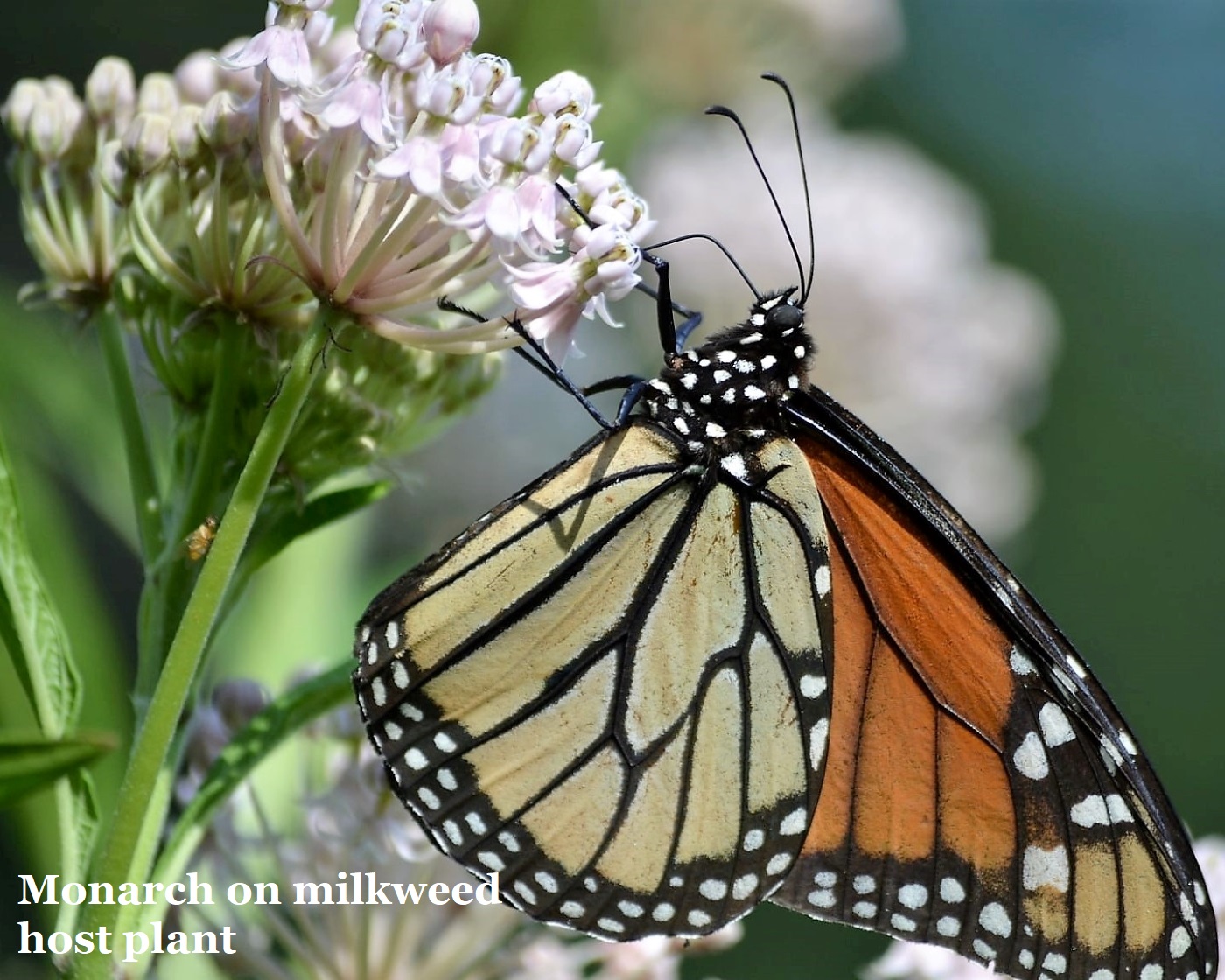 The most important plants in any pollinator garden are the larval host plants. There is much specialization in nature, and each species of pollinators require specific plants for their larvae. For example, monarch mothers will only lay their eggs on milkweed, as that is the only plant that their caterpillars evolved to eat.
The most important plants in any pollinator garden are the larval host plants. There is much specialization in nature, and each species of pollinators require specific plants for their larvae. For example, monarch mothers will only lay their eggs on milkweed, as that is the only plant that their caterpillars evolved to eat.
Our most successful host plant is passionvine. Yvonne wrote an excellent article on this that was posted in February. It feeds our most common butterfly caterpillars, gulf fritillary, plus many zebra longwing, and a few variegated fritillary.
Our next most productive host plant is swamp milkweed. There are over 30 species of native milkweeds in our area. It is very undesirable to plant the commonly sold tropical milkweed, with orange and red flowers, as they are likely to spread a crippling or fatal disease (OE) to the monarchs and the plants are becoming invasive.
We have not had much success growing the other native milkweeds, but the swamp milkweed can get 5 ft tall and several feet across. They often come back the next year and can be easy to grow from seed.
You can protect and collect the seeds by putting little net bags, found in the wedding sections of Dollar Tree and Walmart, over the young seed pods. Unfortunately, these pods are the favorite food of the orange and black native milkweed beetles, so the bags protect them. Pull the drawstrings tight but don't knot them.
You could grow some new plants for your own garden, to give to friends, and donate some of them for future sales at Birdsong! We always sell out of these plants.
Swamp milkweeds bloom more, grow bigger, and attract more butterflies in full sun, and do not require as much water as the name implies. We only water mature plants during drought.
The biggest problem in growing them are the exotic invasive orange oleander aphids that seem to find the milkweeds anywhere. The key to dealing with these is found in the old adage "a stitch in time saves nine." The first year we grew them, there was one huge plant that was killed by the aphids and the sooty mold that grows on the sweet excretion they emit. It is unusual for aphids to kill a whole plant, but it can happen. This was a sad way to learn this lesson!
The so-called honeydew the aphids produce is so attractive to ants that they actually "farm" the aphids, protecting them from predators and stroking them for their honeydew! If you see ants on your milkweed, look out for aphids, especially on new leaves and flower petioles (their tiny stems) and under leaves.
If you nip the aphids in the bud the infestation does not last long, so eliminating them is not as much trouble as it sounds and well worth the effort. You can enjoy your lovely plants the rest of the season, checking occasionally for aphids.
As soon as the plants are a few inches tall, start examining the new leaves frequently and get rid of the early small populations of aphids immediately. There should be no guilt in doing this as they are a very destructive non-native invasive species. Each reproducing female can give live birth (asexually!) to 50 to 100 new nymphs every two weeks. You can look online for many solutions, but my current favorite is gently brushing them off with a soft makeup brush. They can't get back up on the plant as most are wingless until the end of the season. I recently read of vacuuming them off with a small battery-operated vacuum, and I may try that this year. You want to do your best not to disturb any butterfly eggs and tiny caterpillars. The eggs do cling tighter than the aphids do. The aphids usually arrive before the butterflies, so this is another reason to catch them early, as the butterflies are unlikely to lay eggs where there are aphids. And of course, you don't want to use any chemicals, even soap, that might injure or kill the little caterpillars.
Milkweeds not only host monarch and queen butterflies but are also very popular nectar plants with many species of butterflies and other pollinators. They provide many beautiful photo opportunities as the flowers are a lovely shade of soft pink and have very interesting shapes and clusters.
Most native plants are hosts to at least one butterfly or moth. You can look up any plant online with the word host or larval host in the search and you can find what they support.
NECTAR AND POLLEN
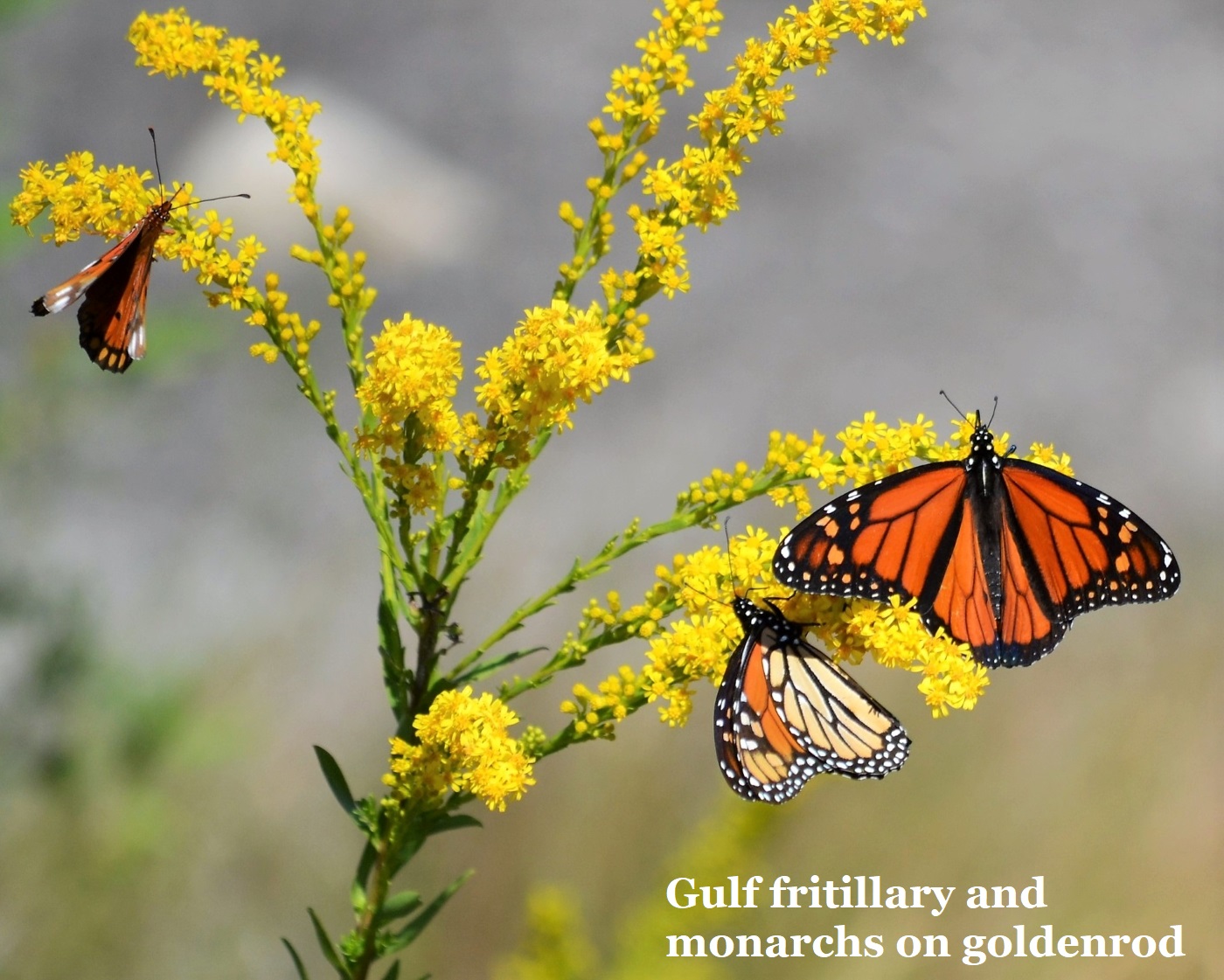 Providing nectar and pollen for the adults to collect is much easier but less important than growing host plants because all flowering plants offer nectar and pollen with much less specialization. Please know that non-natives are not as nutritious and many are not attractive for the pollinators, and native plants are essential for the web of life. Even cultivars of natives, developed to please people, not wildlife, are significantly less beneficial than straight natives, so to support wildlife it is best to shop at the native plant section of our sale and nurseries that specialize in native plants.
Providing nectar and pollen for the adults to collect is much easier but less important than growing host plants because all flowering plants offer nectar and pollen with much less specialization. Please know that non-natives are not as nutritious and many are not attractive for the pollinators, and native plants are essential for the web of life. Even cultivars of natives, developed to please people, not wildlife, are significantly less beneficial than straight natives, so to support wildlife it is best to shop at the native plant section of our sale and nurseries that specialize in native plants.
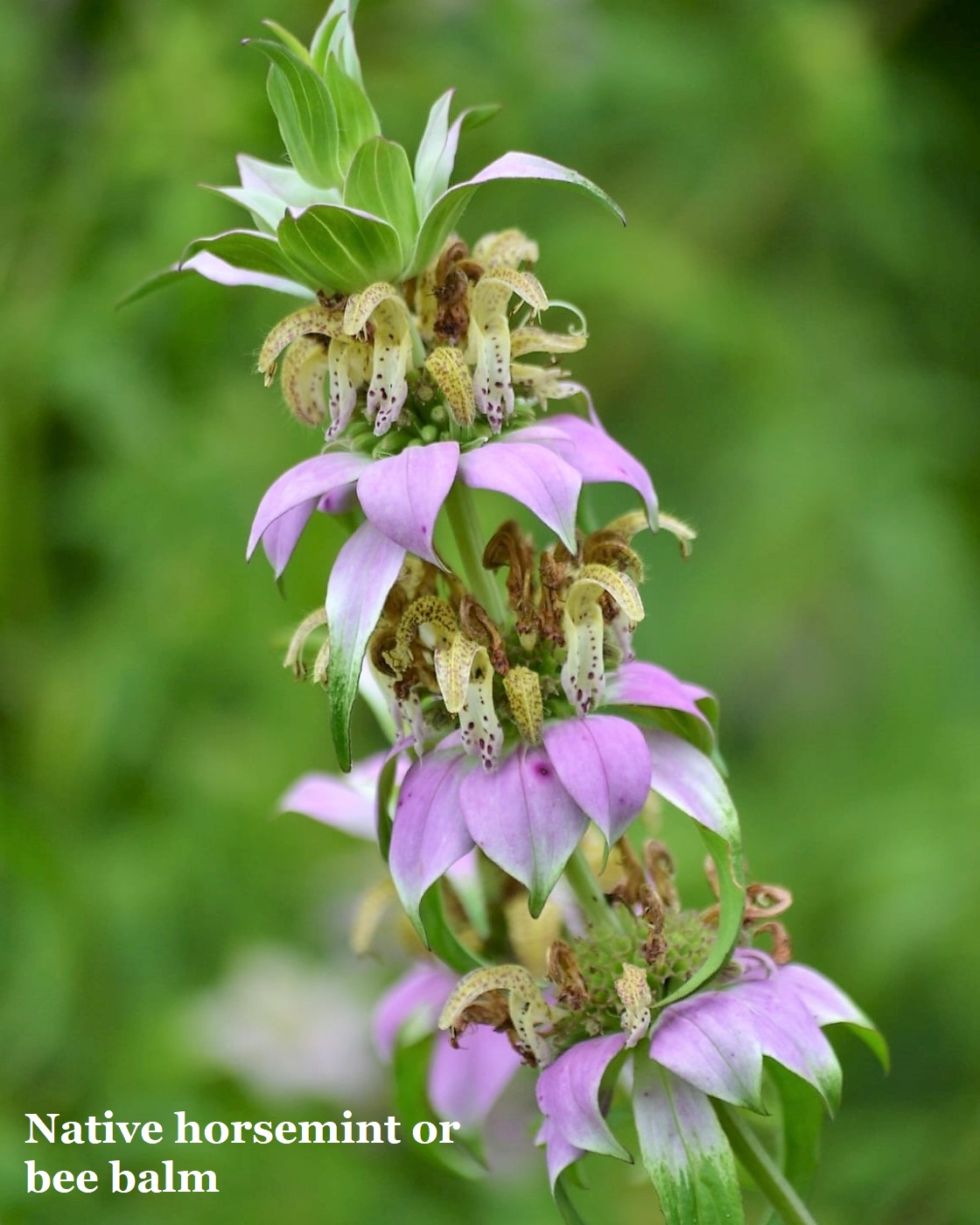 Some of the most popular nectar plants with the pollinators that we have for the sales include dotted horsemint, scarlet sage, New England aster, cutleaf coneflower, and goldenrod.
Some of the most popular nectar plants with the pollinators that we have for the sales include dotted horsemint, scarlet sage, New England aster, cutleaf coneflower, and goldenrod.
Dotted horsemint aka bee balm, is a very interesting plant with unique flowers that are abuzz with all kinds of pollinators when they bloom. It spreads by seed, so we now have it in many places in our sun garden. The leaves can be used for tea, too.
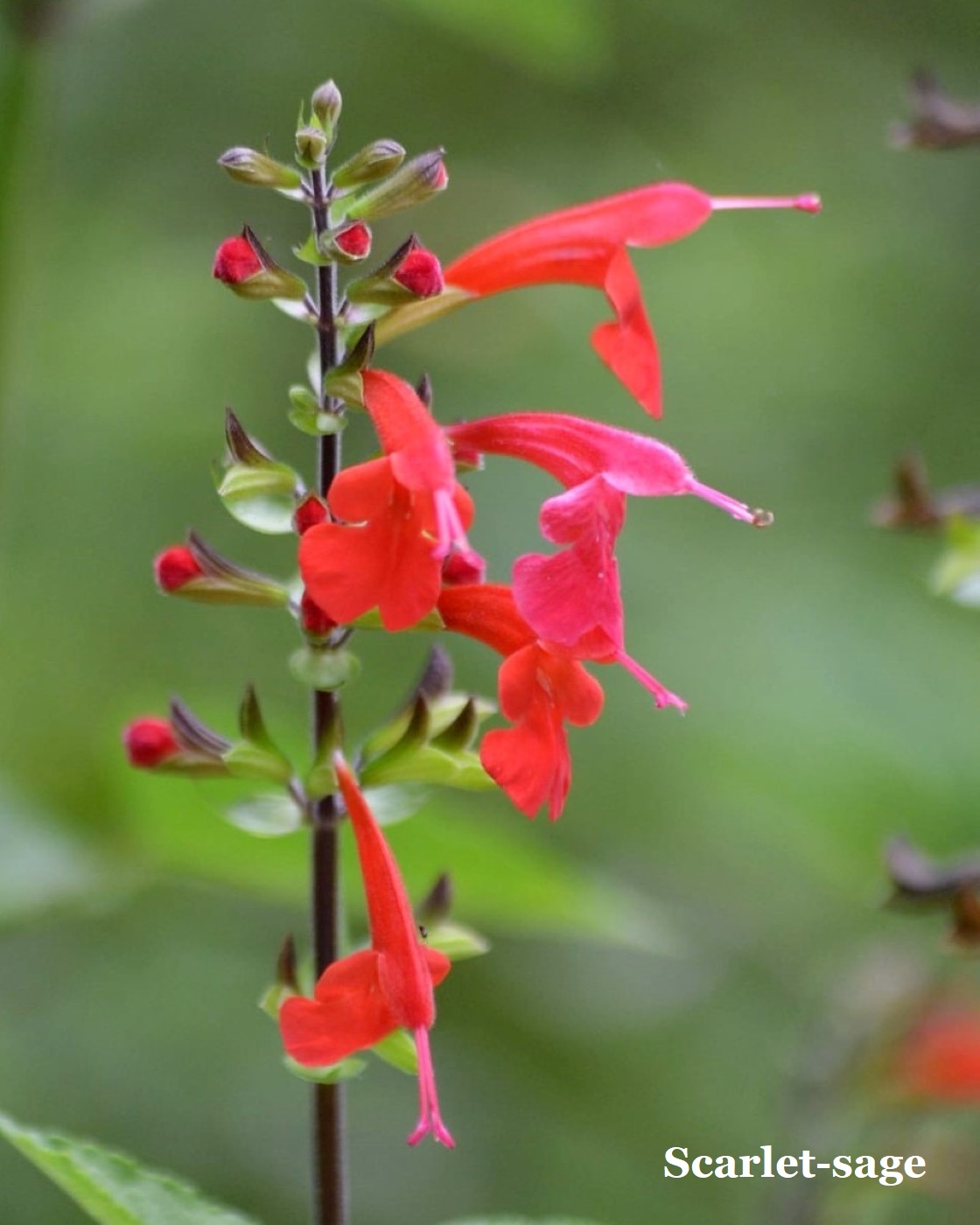 Scarlet sage also reproduces by seeds that fall on bare ground. It has beautiful dark red flowers and attracts hummingbirds as well as other pollinators.
Scarlet sage also reproduces by seeds that fall on bare ground. It has beautiful dark red flowers and attracts hummingbirds as well as other pollinators.
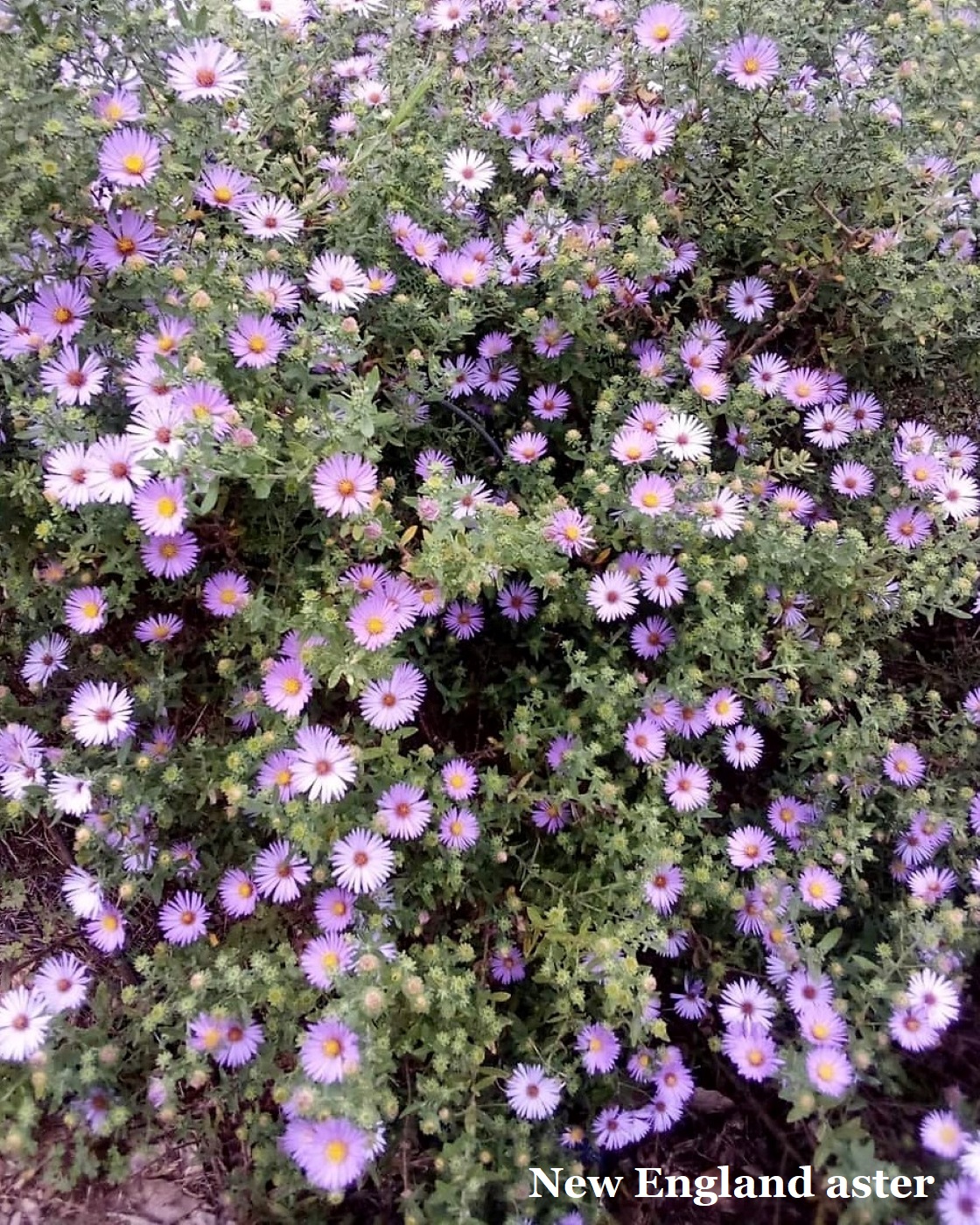 New England aster is by far the most popular plant in the Thomasville Pollinator Garden, which has over 100 native species. We bought one of these gorgeous asters at a Birdsong plant sale about 3 years ago and planted it in full sun. By the following year it had grown to a large round mass with hundreds of small blue flowers. Each year the mass has gotten bigger. It certainly had at least a thousand blooms on it last year! Clearly, we had succeeded at adding the right plant in just the right place. Native bees are very attracted to its nectar and pollen.
New England aster is by far the most popular plant in the Thomasville Pollinator Garden, which has over 100 native species. We bought one of these gorgeous asters at a Birdsong plant sale about 3 years ago and planted it in full sun. By the following year it had grown to a large round mass with hundreds of small blue flowers. Each year the mass has gotten bigger. It certainly had at least a thousand blooms on it last year! Clearly, we had succeeded at adding the right plant in just the right place. Native bees are very attracted to its nectar and pollen.
Cutleaf coneflower also has been easy to grow. It spreads generously, but not too aggressively. It has large, pretty green basal leaves that in summer produce flower stalks several feet tall, covered in bright, fairly large, yellow coneflowers.
False sunflower aka oxeye is highly valuable due to its long bloom season. If it's happy where it is growing, it may bloom all summer and into the fall in a pleasant clump about three feet wide and tall. The flowers look like small sunflowers but hold on to their ray petals as they go to seed. They do well in full sun to part shade and don't like to be crowded by other plants.
All goldenrods are very popular with many pollinators. I have often seen bumblebees sleeping in the flower heads early in the morning or late in the evening. The seaside goldenrod we will have for sale makes a nice clump and does not have the rhizomes that make the Canada goldenrod spread so aggressively.
SUMMARY
A general recommendation for planting for pollinators is to group many plants of the same species close together in the garden, making it easier for the insects to find the ones they are looking for.
Final thought: If you want to make a difference in the biodiversity crisis, planting native plants and conserving those that already exist, like oak and other native trees, will be your greatest asset. Insects eat and reproduce on native plants and all other wildlife eat native plants or insects or other animals that do. The web of natural life really is all about native plants and insects!



